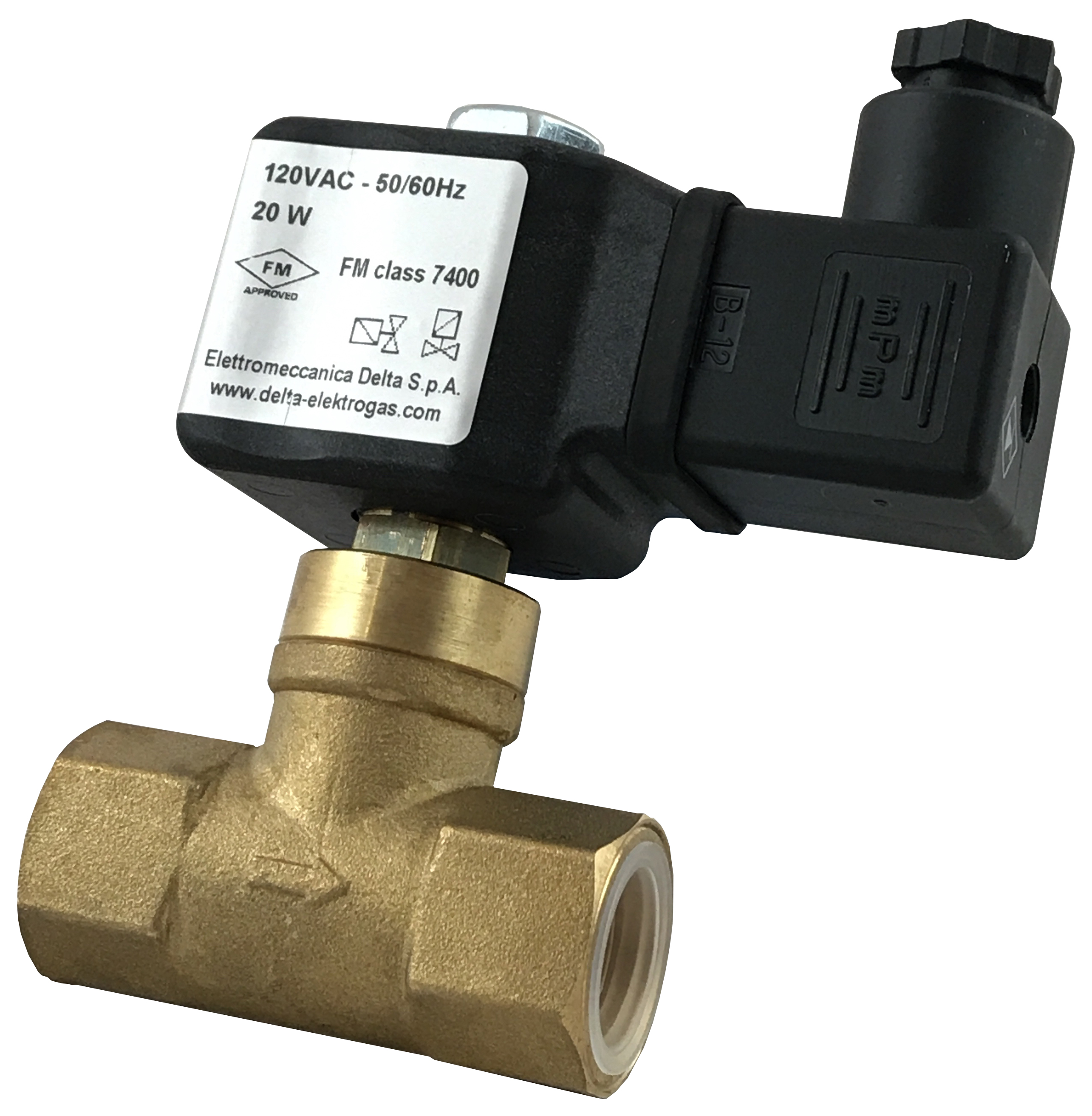Q: What is a safety shut off valve?
A: A safety shut-off valve (SSOV) is a normally closed valve which opens when power is supplied. They are found in the main gas train as well as the burner (gas) train. In a combustion system, safety shut-off valves receive their power from the flame safety device or the PLC, and this power is dependent on the safety chain. If a link in the safety chain is broken, power is removed from the SSOVs, and the flow of combustible gas is stopped. Once power is removed, a safety shut-off valve must close in less than one second.

NFPA86 provides guidelines for how many SSOVs are required, and what additional features are needed to satisfy the code (if any).
There are many different types of safety shut-off valve, including:
· Opening speed: fast opening or slow opening
· Actuation: solenoid, motor, hydraulic, pneumatic
· Seating: gate (metal-on-metal), single seated (NBR rubber), double-seated (NBR rubber)
· Reset: automatic or manual
We most often see requests for fast opening solenoid actuated valves with automatic reset. Elektrogas SSOVs are single-seated, which helps ensure they stay sealed even in the face of high inlet pressures.
Some SSOV Options
We’ve compiled a list of some options or features to consider when looking at new or replacement SSOVs.
· Enclosure rating: Consider the environment where the SSOV will be installed, and choose an enclosure rating that makes sense for that environment.
· Operating voltage: It’s imperative to select the correct supply voltage for the valve, because it won’t open otherwise. Supplying more than the required voltage may result in damage to the valve.
· Electrical connection: This might be screw or spring terminals; it might also be a standard plug-and-socket.
· Max. operating pressure: All SSOVs have a max. pressure rating. Pay close attention to this rating and compare it to the system and line pressures.
· Pipe connection: Our most popular valves are threaded for NPT, though you may also encounter valves with Rp thread, or flanged for ANSI or ISO connections.
· Flow & pressure drop: Pay close attention to the pressure drop you will take across the valve given the flow for your application. Most manufacturers have guidelines warning against excessive pressure drop and flow velocity.
· Special gases: If you’re using COG, biogas, or some other aggressive and/or dirty gas, it’s a good idea to check the valve specifications for compatibility.
· Indicator light: Some valve models offer an LED to show power is applied. This is not the same thing as Visual Indication (see next).
· Visual Indication: Visual Indication, or VI, is required by NFPA86 after a specific capacity threshold. VI is a visual indication of the valve’s state, whether open or closed, and is intended as a means for operators or maintenance staff to know whether or not gas is flowing in the system.
· Proof of Closure: Proof of Closure (POC) is required by NFPA86 after a specific capacity threshold, and provides a circuit tied to the physical, mechanical state (open or closed) of the valve. This circuit is monitored by the flame safety device or the PLC, and becomes part of the safety chain. POC also incorporates “valve over-travel,” which stipulates the valve is not considered “closed” unless some part of the valve seal extends past the valve seat by a specific measurement.
How to select an SSOV
Whether you’re replacing an existing valve or specifying valves for a new system, you should always pay close attention to:
· Line pressure: What is the maximum pressure the valve is likely to see in the gas line? Select a valve rated for at least that much pressure.
· Flow & pressure drop: Find out the maximum flow the valve is likely to see in the gas line and select a valve sized appropriately so you don’t take too much of a drop in pressure.
· Voltage: Look at the voltage you will supply the valve, and select a suitable model.
· Capacity: What is the system capacity? Is VI or POC required? If so, be sure to select them.
· Environment: Consider the environment and the type of gas used to inform your selection.
For automation
Visit olstrad.com to learn more about our automation processes!











